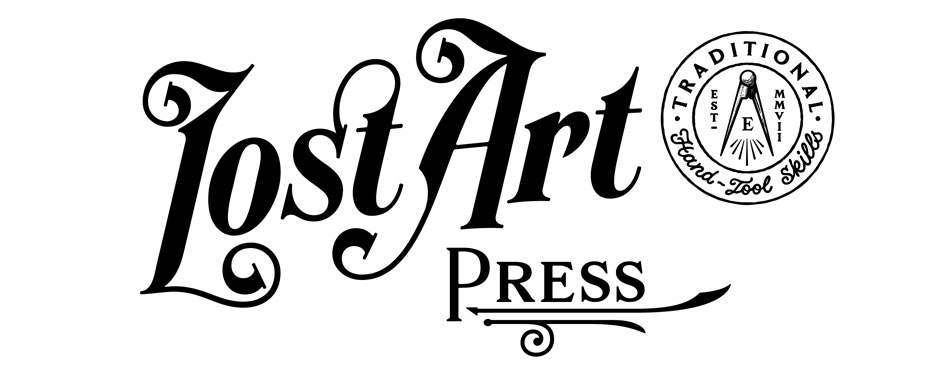It’s almost impossible not to mention the name “John Brown” when you discuss anarchism and woodworking.
And yet, somehow I managed to do this.
John was the author of a column in the British magazine Good Woodworking in the 1990s that was titled “The John Brown Column” and later “The Anarchist Woodworker.”
When I was managing editor at Popular Woodworking in the late 1990s, I read John’s columns every month. The logo of the column – a guy holding a lit bomb – was arresting. John himself was intent on sticking it to the woodworking establishment, and he shunned machinery in favor of hand tools at every turn, which is how he built his bench, shop and the Welsh Stick chairs he sold.
 When I first read John’s columns, I was still deeply in love with my table saw, planer, jointer and router. But his Welsh Stick chairs absolutely blew my mind. Since the moment I saw them, I became obsessed with building chairs that looked as masculine and animalistic as his.
When I first read John’s columns, I was still deeply in love with my table saw, planer, jointer and router. But his Welsh Stick chairs absolutely blew my mind. Since the moment I saw them, I became obsessed with building chairs that looked as masculine and animalistic as his.
In the late 1990s, John wasn’t teaching classes in the United States anymore, so I sought out David Fleming in Cobden, Ontario, to teach me about the Welsh Stick form during a week-long class. Then I took a second week-long class with Don Weber to refine my skills and learn new techniques in building the Welsh Stick form.
John’s book, “Welsh Stick Chairs,” is one of my prize possessions, and I hope someday to have his eye for form when it comes to building Welsh Stick chairs. “Chairman Brown,” as his fans called him, is part of every chairmaking operation I know.
But there was more to John Brown than just a chairmaker.
His column in Good Woodworking was a diary at times. He sought to rebuild a new life as a hand craftsman in a machine-based society. He built and outfitted his shop, and the entire process was covered in the pages of Good Woodworking. He advocated using fewer tools and both eschewed and ridiculed machinery (and turners, by the by).
The last time I read John’s columns was in 2004 and 2006 as I was assembling a data base of quotations for Woodworking Magazine, which I was editing. After 2006, I stowed my photocopies of his columns in my shop cabinet, where they sit until today.
Why? When I’m writing any book, I refuse to read books by other authors, famous or obscure. It’s a painful choice because I love to read (I’m not writing right now so I’ve got three novels on my Kindle). But I know how easy it is to be influenced by clever writers. So I try to sequester my brain as much as possible.
So here’s the painful part.
This week, Brown’s editor, Nick Gibbs, mentioned that he was surprised that I didn’t mention John Brown anywhere in “The Anarchist’s Tool Chest.” To be honest, I’m surprised as well. John was the first person I know of who married the word “anarchist” with “woodworking.” And that stroke of genius either planted seeds in my brain or fertilized them when I wrote my book.
But I can honestly say that I have no idea if John Brown’s version of anarchy matches mine. I kinda doubt it – anarchists are a fractious bunch – and I haven’t looked at his columns for five years now. But I can say this: I am amending the dedication to the next printing of “The Anarchist’s Tool Chest” to acknowledge my debt to the path that he blazed in the 1990s.
I don’t know if he would have liked my book – I rather doubt it – but he’s a part of it now.
Thanks to Nick – now the the editor of British Woodworking and Living Woods magazines – for pointing out my oversight. And I’d like to cast my vote for a reprinting of Chairman Brown’s columns in the coming years, whether I’m involved or not.
— Christopher Schwarz








